Part 3 Balance of a Yacht to Windward
Part 3 What Affects Balance and How Much?
1. 0 Where to put the keel?
It should be clear from the above that the primary need is to have the keel in the correct position relative to the rig. In most development classes of model boats, the ballast is in a bulb at the base of a deep narrow keel and the ballast ratio is upwards of 60%. Given this, the bulb has to end up in a fore and aft position close to that of the centre of buoyancy. Of course, one can juggle with the heavier items like the winch and battery but other constrains make these changes relatively small. I have seen a 36R, which has a wider and much shorter keel than the IOMs or Marbleheads or Ten Raters, where the bulb extended well forward of the keel, and the keel and rig were well back from the usual position. Reportedly it sailed quite well! Having said that, there is interaction between the keel and hull and this is more a matter of trial and adjustment within the range possible. With long thin keels there can be problems with torsional distortion of the keel. (See article under “Keels etc.").
In the usual development classes of model yachts in Australia, the keel position is largely dictated by weight balance. The rig then has to be positioned to suit the keel, and class rules. Most new designs need some post launch adjustment to get it all correct. It is theoretically possible to work out the desirable keel/rig placement using diagrams like those in this article the uncertainties of the magnitude and line of action of the hull side force poses the main problem. This was the method I adopted for my Trailer Yacht designs and it worked well. Most designers simply look at successful boats and then adjust from there.
If you are determined to experiment (an attitude I applaud!) then remember that a little too big a keel or rudder is much better than a little too small, and a keel a little too far forward is a lot better than one a bit too far aft. Of course a perfectly sized and placed keel/rudder combination is best of all but this is likely to be perfect in only one set of conditions anyway!
2.0 How much things effect balance
The following table gives approximate movements of the intersection of the hydro and wind forces with the hull center-line for various adjustments. These are approximate but do help to understand what does what and how much. The figures for changes to the sail forces are fairly straightforward, but those for the keel and rudder forces need some explanation because they involve some assumptions. For the purposes of the calculations it was assumed that the hull contributed 5% of the side force and that this acted at 300mm from the bow. It was also assumed that the rudder had an area 40% of that of the keel.
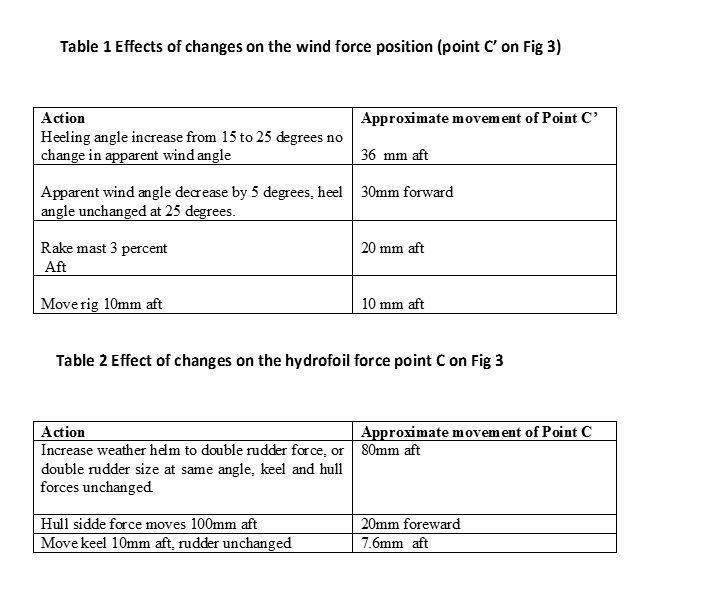
It was also assumed that, for the base case, the boat was set up to sail to windward in steady conditions with the rudder on the centreline. Because of the downwash from the keel the angle of incidence of the water flow on the rudder is reduced to just over half of the leeway angle, and because the rudder has a lower aspect ratio and operates at a lower Reynold’s number, it produces less side force pro rata than the keel. As a rough guide the rudder will then produce a side force per unit area about half that of the keel with the rudder central and this is what was assumed for the base case.
Increased side force means more leeway, at least until the boat accelerates to increase the lift from keel and rudder. Of course, if the boat is already at hull speed, very little increase in speed is likely but all that is too esoteric for this article. Most of these effects, i.e. increased weather helm and increased leeway, will slow the boat, or at least reduce any acceleration. The techniques to handle gusts depend on the boat type. Clearly in a displacement hull already at hull speed the idea is to minimise the increase in side force while luffing to take advantage of the swing in the apparent wind. On the other hand in light dinghy that can plane to windward a different approach would be adopted.
The increased load on the sails and rigging will also cause them to change shape to some degree. Ideally, the upper sections of the sails would flatten and feather off, easing the upper leech. If you put a properly set up Soling one metre on its cradle in a proper angle to the breeze and watch the sails you will see this effect, though to my view the response is a bit too great. However, not all such changes in the sails are beneficial. A common change in soft sails is that the draft blows aft and the leech hooks. This results in an increase in the wind drag force and a decrease in the wind lift force (and hence a reduced driving force). In addition the force of the wind on the sail also moves aft and this increases weather helm, while the increased side force leads to excessive heeling.
Some other effects are a bit more subtle but equally or more damaging. As an example I can cite my last NS14 (a 14 foot development class that formed the basis for the International Tasar). All my previous ones had the mast stepped on the centreboard case with chocks at deck level (rather like an IOM), with a powerful boom vang that was taken onto the hull just aft of the base of the mast. This vang acted as a backstay as well as a vang. On the river, the gusts hit too fast even for an NS14 and we commonly shed a foot or so of mainsheet for a second or two to take out the sting out of the gust and to help acceleration while we luffed gently. When I did this in my new boat it staggered rather than accelerating like the previous boats did. I knew the main was doing the right things, but careful observation showed that the forestay sagged at each gust and the sheeting geometry meant the leech actually tightened. This occurred because in the new rig the vang came to the base of the mast at deck level and did not have any “backstay” effect so when the main was eased all the tension went from the forestay. The problem was reversed by using dramatically increased side stay tensions and adjusting the jib sheeting.
If the backstay of my Soling one metre is over tensioned, something of the same sort occurs, though with a different mechanism. In a more usual model yacht with a topping lift on the jib boom and if the pivot point is too far aft, I can imagine a similar problem if the topping lift can stretch because, when the gust hits, both topping lift and forestay will be loaded and if the topping lift can stretch, the see-saw action of the jib boom will slacken the forestay while the cloth in the leech could be tensioned.
Another hypothetical adverse behaviour could arise in a rig where the back stay was set up so tightly that the mast was on the point of buckling. The extra load on the forestay and could then conceivably buckle the mast which would shorten it and allow the mast head to move forward and hence allow the forestay to sag.
In a lull the reverse to all this occurs. This can have its own problems. An example is the Soling one metre: if it is set up to look right in a wind that heels the boat 20 degrees or so, when a lull comes, the leach of the headsail springs back too far and chokes off the airflow. I am sure that experienced model yachties can think of many more examples!
Colin Thorne
July 2008
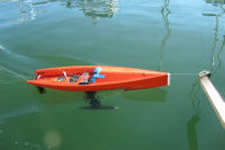
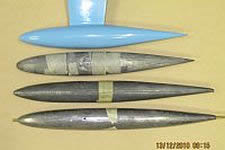
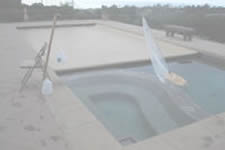
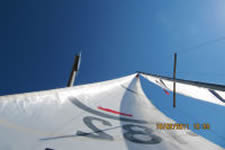
 Behaviour
Behaviour